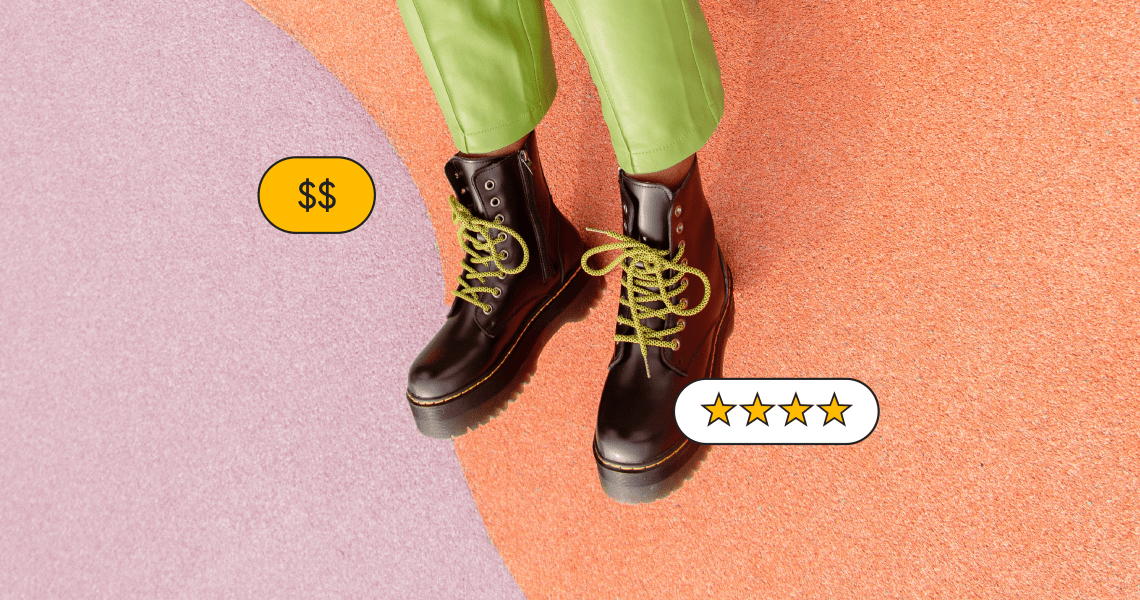As the largest search engine in the world, Google’s e-commerce changes greatly affect companies that want to position themselves front and center for customer discovery.
On Wednesday, nine new shopping tools, including 3D products, buying guides and shoppable looks were announced at the company’s annual Search On event. The new tools will make it easier for new and emerging brands to be suggested alongside bigger companies. The goal of the shopping tools is to hopefully attract brands and marketers away from platforms like Amazon.
Highlights include a new visual feed of products where customers can see products by including the word “shop,” followed by the item in the search box. This will allow users to see a visual feed of products, research tools and nearby inventory related to the product. The platform is also bringing the visual feed to beauty alongside fashion products, which were introduced last year.
Other highlighted features announced at the event include personalized shopping for fashion, which feature an opt-in Google learning feature that learns about shoppers’s preferences as they search, as well as new filters that are focused on trending products. Customers will be also able to see fashion items like sneakers in 3D directly in search; this will be available in the U.S. in early 2023.
All of the new features come from the data in the Shopping Graph, an AI-enhanced model for shopping search and suggestions that was launched in May last year. The model has been updated, understanding more than 35 billion product listings.
Lilian Rincon, senior director of product at Google in shopping, said, “Last year, we launched shoppable search for apparel, and today we’re expanding that experience to all other shopping categories, including beauty. This experience builds on the other beauty features we’ve launched, including AR beauty, which lets shoppers try on products like lipstick and foundation.”
Google’s new focus on AR rivals Snapchat, which has been testing augmented reality with a large list of beauty and fashion partners, like American Eagle. At the moment, Google is not launching an AR competitor, but it did announce a 3D product option that could point to a similar AR integration in the future.
Ad position: web_incontent_pos1
Josh Duggan, co-founder of e-commerce consultancy Vervaunt, believes Google’s changes have created a clearer solution for ad spend for brands. “Google has continuously tested and evolved the search experience for consumers with a number of the newer, more innovative updates being pushed and tested in the U.S. first, especially with buy on Google making it easier to purchase through the search engine,” he said.
He continued, “3D imagery is a good example whereby Google is adjusting to consumer engagement; brands need to ensure they are delivering the content which reflects this. Basic optimizations will still be fundamental; a number of the releases will all use data from within a brand’s product feed and site metadata. Brands need to ensure they have the correct product category data and bundling set-up to ensure they’re ready to capitalize on the new features.”
Monica Axinte, vp of marketing at e-commerce platform Cart.com, hopes these changes will make data disclosure easier for brands. “According to the Feed Marketing Report, 2022 retailers in the fashion industry are already dealing with quite a lot of pressure to keep their data in top-level condition due to the high complexity of product data,” she said.
As Google’s own studies found that TikTok and Instagram are key discovery platforms for millennials and Gen Z, aiding discovery through trending products was also a focus of the new shopping features. “It’s very important to us to understand our different user segments, their needs and their evolving shopping preferences. There’s now a growing proliferation of content created by everyday people; whether that’s sharing a styling session in a YouTube video short or how to fix a clogged pipe on a forum like Reddit,” said Rincon.
Axinte added that with TikTok being a non-curated space, it could spread misinformation, “Savvy users will also rely on Google for fact-checking or validation,” she said. “Despite increased competition from Amazon, TikTok and other platforms, we think Google will continue to play a relevant role.”
Cory Cummings, co-founder of e-commerce front-end developer Pack said, “Given the breadth of user data Google can glean from user behavior across the entire Google product suite, the search giant can quickly present users items that mirror their behavior and likely the most personalized shopping experience on the web,” he said. “TikTok, Instagram and other social platforms should be on their toes, doing everything they can to strategically keep their shopping experience the most relevant with Gen Z and all audiences.”
Since 2020, Google has seen an 80% growth in the number of merchants that use Shopping and a 70% increase in products listed. hat same year Google made it free to list products, giving small brands an opportunity to get discovered alongside namesake products. Over 1 billion Shopping sessions occur on a daily basis.
Ad position: web_incontent_pos2
“From our perspective, what we do best is organize the world’s shopping information, no matter what form it’s in; people come to Google to find that result,” she said. “The opportunity ahead lies in our ability to understand and organize all of this content in ways that make sense for people.”


